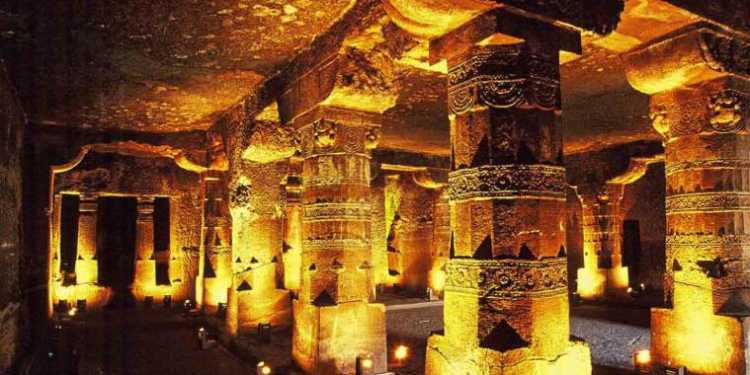After the ground breaking discovery of three royal Chariots and royal burial sites in Baghpat in Western Uttar Pradesh, another discovery has been made by the Archaeological Survey of India in Vidarbha region. The Baghpat discovery has its own importance in settling down doubts over the existence of chariots and horses in the Indian history. It also threatens and possibly quashes the ‘Aryan Invasion theory’ which is propagated by the Marxist historians in India and outside. The relics suggest the existence of chariots which could be driven by one person. Next, the ‘Chariot’ discovery would potentially change the hitherto held concept of the existence of ‘Horses’ in IVC. Horse bones were found in another IVC site, Surkotada in Kutch Gujarat some years ago. Royal Chariots were drawn by horses and with one single charioteer.
To add to this, city based archaeologists from Deccan College have recently confirmed that the Vakataka dynasty ruled from its capital Nandivardhan (modern day Nagardhan). Led by Project director Virag Sontakke from Department of Archaeology and Museums, Government of Maharastra the team had been excavating the site in Vidarbha in three seasons from 2015 to 2018.
The team from Maharashtra has unearthed vital artifacts belonging to the period of Vakataka rule. Senior archaeologist at the Deccan college and co-director of the Nagardhan Excavation Project told Indian Express that, “Some of the artifacts, including ceramics and ear studs made of glass, were excavated from the site and these were the typical items used during this period,” The discovery of the artifacts is special because till date only written inscriptions and copper plates featuring the Vakataka King Prithvisena had been excavated. These artifacts are the first proof that the king had indeed shifted his capital from Padmapura to Nandivardhan in Vidarbha. Ceramics, bowls and pots, votive shrine and tank, iron chisel, a stone depicting deer and terracotta bangles are some of the artifacts which were recovered from the excavation site. After thorough studies were conducted they were found to be unique to the period by the team. Along with these Terracotta objects with images of gods, animals and humans were also discovered. Shantanu Vaidya, co-director in the excavation project said, “The excavations were planned and carried out at six different locations. From the materials excavated, we find strong links confirming presence of a capital of Vakataka dynasty here.” The discovery of these sites confirms that such changes in capital had indeed taken place in the ancient times. Vakataka rulers had commissioned the building of the majestic Ajanta and Ellora caves.
The Marxist historians have indeed taken charge of the history of India and they have completely sidelined these important dynasties by choosing to focus on the Delhi centric sultanates. Their love for the Mughal rule knows no bounds and neither does their apathy for the historic Indian civilizations. From South to North such excavations will continue to shed more light on the history of India and new facts will keep emerging. The Archaeological Survey of India had also recently conducted tests on the remains discovered in Rakhigarhi, near Hisar Haryana. The studies conducted on the human DNA revealed that there was little to no mixing with foreign population. This indicated that the Vedic era was a fully indigenous period with limited external contact hence challenging the Aryan-Dravidian theory which is used so often to create divides in the country. Further studies will remove all doubts about the origin of Indians and will disprove the concocted theories of Marxist historians.

































